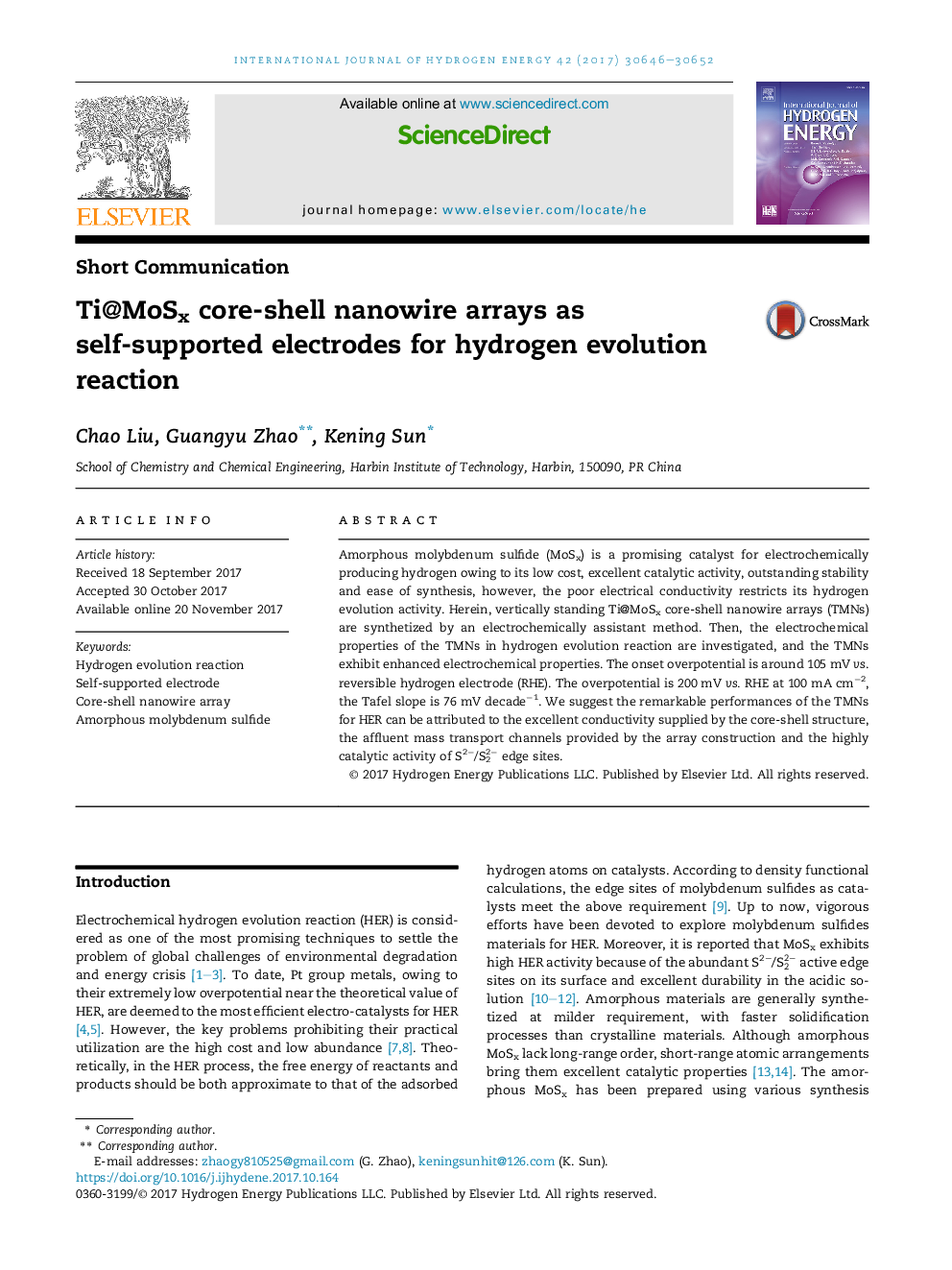| Article ID | Journal | Published Year | Pages | File Type |
|---|---|---|---|---|
| 7708694 | International Journal of Hydrogen Energy | 2017 | 7 Pages |
Abstract
Amorphous molybdenum sulfide (MoSx) is a promising catalyst for electrochemically producing hydrogen owing to its low cost, excellent catalytic activity, outstanding stability and ease of synthesis, however, the poor electrical conductivity restricts its hydrogen evolution activity. Herein, vertically standing Ti@MoSx core-shell nanowire arrays (TMNs) are synthetized by an electrochemically assistant method. Then, the electrochemical properties of the TMNs in hydrogen evolution reaction are investigated, and the TMNs exhibit enhanced electrochemical properties. The onset overpotential is around 105Â mV vs. reversible hydrogen electrode (RHE). The overpotential is 200Â mV vs. RHE at 100Â mAÂ cmâ2, the Tafel slope is 76Â mV decadeâ1. We suggest the remarkable performances of the TMNs for HER can be attributed to the excellent conductivity supplied by the core-shell structure, the affluent mass transport channels provided by the array construction and the highly catalytic activity of S2â/S22â edge sites.
Related Topics
Physical Sciences and Engineering
Chemistry
Electrochemistry
Authors
Chao Liu, Guangyu Zhao, Kening Sun,
